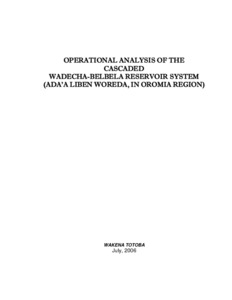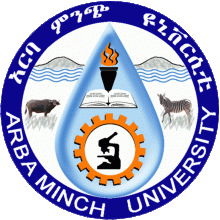Resource information
Wadecha-Belbela reservoir system is located in Oromia Region, East Shoa zone, Adaa Liben woreda serving as a water source of 1600ha irrigation projects. The irrigation system under the reservoir system is increasing progressively during the past decades. The expansion of irrigation development without the knowledge of the water source will have the outcome of agricultural yield reduction and water stress. Inadequate knowledge on operation of the reservoir has been leading to inefficient usage of stored water. This study focuses mainly on the description and assessment of water resources of the woreda based on climate, land and water information, estimation of irrigation water requirements of the reservoir system irrigation projects, and operational analysis of the reservoir system by the application of reservoir system simulation model (HEC-ResSim). Nine years of meteorological data were used to simulate the Wadecha-Belbela reservoir system. The main input data to the model were the reservoirs physical characteristics, the irrigation water diversion estimated by CROPWAT 4 windows software, potential evaporation (mm), daily surface inflow (m3/sec) to the reservoirs system. The outputs of the model were the release (m3/sec), storage (m3), reservoir level (m), and inflow-outflow relations of the reservoir system. From the analysis it can be deduced that the available water sources of the reservoir system has sufficient capacity to irrigate the potential land under the system without water stress, provided that proper release rules are followed. The maximum capacity of the reservoir system estimated is 21.85 Mm3 and the maximum water demand is 17.22 Mm3 this will have the surplus water storage ix 4.63Mm3 remained in the reservoirs system. Therefore, if the releases of water from the reservoir systems are followed according to the monthly irrigation water requirement, this can sufficiently serve as the operating rule of the reservoirs. The study also provides an operation rule curve using the application of HECResSim.



